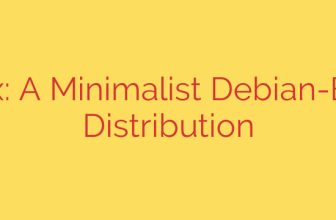
Building Your Own AI Assistant: A Practical Guide to Using ChatGPT and Copilot
Artificial intelligence has moved beyond a futuristic concept to become a practical tool that businesses and individuals use every day. While generic AI models are powerful, the true competitive advantage lies in creating customized AI assistants tailored to your specific needs. The good news is that you no longer need a team of data scientists to do this. Platforms like ChatGPT and Microsoft Copilot now offer user-friendly tools to build your own specialized AI.
This guide will walk you through the essentials of creating custom AI assistants, helping you unlock new levels of productivity and efficiency.
Why Build a Custom AI Assistant?
A standard AI is like a general practitioner—it knows a lot about many things. A custom AI, however, is a specialist trained on your specific data and for your unique tasks. The benefits are significant:
- Enhanced Productivity: Automate repetitive tasks, answer specific questions instantly, and draft documents in your company’s tone and style. An AI trained on your internal processes can guide new employees or help existing ones find information in seconds.
- Specialized Knowledge: Imagine an AI assistant that has memorized every one of your technical manuals, client histories, or marketing reports. A custom AI can be fed your proprietary data, making it an expert on your business, ready to provide accurate, context-aware answers.
- Improved Consistency: Ensure that all communications, from customer service responses to marketing copy, adhere to your brand guidelines. A custom AI acts as a consistent voice for your organization.
- Streamlined Workflows: Integrate your AI assistant directly into your existing software and processes. It can summarize meetings from transcripts, generate sales reports from CRM data, or even help developers debug code based on your internal libraries.
Creating Custom Assistants with ChatGPT
OpenAI’s GPTs allow you to create tailored versions of ChatGPT for specific purposes without writing a single line of code. These are known as Custom GPTs, and they are incredibly easy to set up.
How It Works:
Building a Custom GPT is a conversational process. You simply chat with the “GPT Builder,” telling it what you want your AI assistant to do.
- Define Your Purpose: Start with a clear objective. For example, you might want a “Marketing Copy Assistant” that writes in your brand’s voice or a “Technical Support Bot” that answers questions based on your product documentation.
- Provide a Knowledge Base: This is the most critical step. You can upload files directly to your Custom GPT, such as style guides, product manuals, FAQs, and past reports. This data forms the foundation of its expertise and ensures its responses are relevant to you.
- Configure Capabilities: Decide what your GPT can do. Do you want it to browse the web for current information? Generate images using DALL-E? Or analyze data files? You can enable or disable these capabilities with a simple click.
- Test and Refine: Interact with your new GPT to see how it performs. You can refine its instructions and upload more data based on its responses until it behaves exactly as you need it to.
Custom GPTs are ideal for individuals and small teams looking to create highly specialized tools for research, content creation, and analysis quickly.
Leveraging Microsoft Copilot for Business Integration
While Custom GPTs are excellent for specific tasks, Microsoft Copilot (powered by Copilot Studio) is designed for deep integration within a business environment, especially for organizations using the Microsoft 365 ecosystem.
How It Works:
Copilot Studio is a low-code platform that lets you customize Microsoft Copilot and build standalone AI assistants that connect securely to your business data.
- Identify the Use Case: Copilot is built for enterprise-level solutions. Common use cases include an HR assistant that can answer questions about company policies from a SharePoint site or a sales bot that can pull customer data from Dynamics 365.
- Connect Your Data Sources: This is Copilot’s greatest strength. It offers robust connectors to integrate with Microsoft services (SharePoint, Teams, Outlook, Dynamics) and other third-party platforms. This allows your AI to access and reason over real-time business data securely.
- Design Conversation Flows: Using a visual editor, you can map out how the AI should respond to different queries and triggers. You can define specific topics, create automated actions (like filing a support ticket), and escalate complex issues to a human agent.
- Deploy Across Channels: Once built, you can deploy your custom copilot across various channels, including internal websites, Microsoft Teams, and public-facing applications.
Microsoft Copilot is the go-to choice for organizations that need secure, data-connected, and scalable AI assistants integrated directly into their core business workflows.
Best Practices for Building Effective AI Assistants
Whether you choose ChatGPT or Copilot, following these principles will ensure your custom AI is a valuable asset.
- Start with a Specific Goal: Don’t try to build an AI that does everything at once. Focus on solving one clear, high-impact problem first.
- Prioritize High-Quality Data: The performance of your AI is entirely dependent on the data you provide. Ensure your source documents are accurate, up-to-date, and well-organized.
- Focus on Security and Privacy: Be extremely cautious when uploading sensitive or proprietary information. Use platforms with enterprise-grade security like Microsoft Copilot Studio for confidential data and ensure you understand the data privacy policies of any tool you use.
- Test, Iterate, and Gather Feedback: Treat your AI assistant as a product. Continuously test its responses, refine its instructions, and ask your team for feedback to improve its performance over time.
By moving from a generic AI user to a creator of custom AI solutions, you can build powerful tools that drive efficiency and give you a distinct advantage in your field.
Source: https://www.simplilearn.com/build-ai-assistants-like-chatgpt-and-copilot-webinar








